| |
|
|
43.
| As a Black Man |
| |

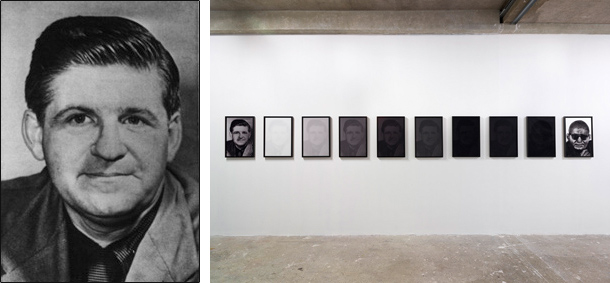
2013-2014, serie of 10 C-Prints, 60 x 40 cm.
Exhibition view from Walking on the light, CCC Tours, 2014, Tours.
Courtesy of the artist and Ceysson & Bénétière, Paris.
Ed. of 5 + 2 A.P.
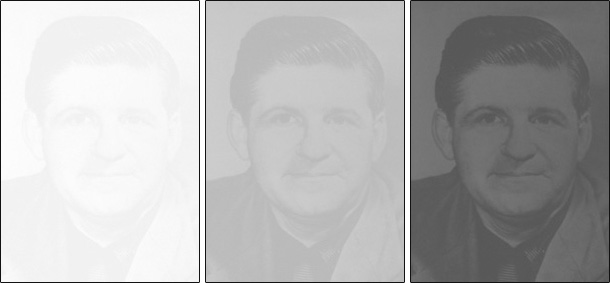
2013-2014, serie of 10 C-Prints, 60 x 40 cm.
Exhibition view from Walking on the light, CCC Tours, 2014, Tours.
Courtesy of the artist and Ceysson & Bénétière, Paris.
Ed. of 5 + 2 A.P.
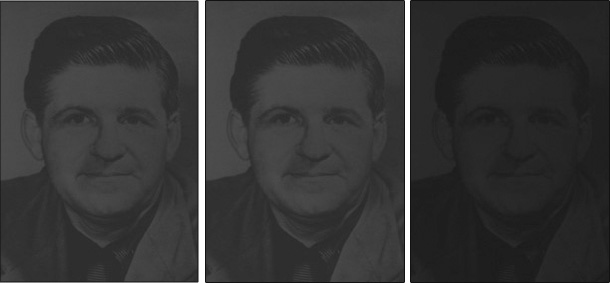
2013-2014, serie of 10 C-Prints, 60 x 40 cm.
Exhibition view from Walking on the light, CCC Tours, 2014, Tours.
Courtesy of the artist and Ceysson & Bénétière, Paris.
Ed. of 5 + 2 A.P.
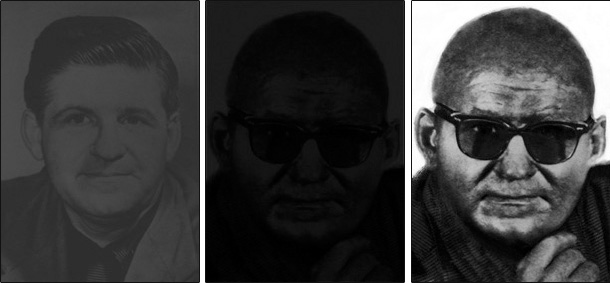
2013-2014, serie of 10 C-Prints, 60 x 40 cm.
Exhibition view from Walking on the light, CCC Tours, 2014, Tours.
Courtesy of the artist and Ceysson & Bénétière, Paris.
Ed. of 5 + 2 A.P.
'' fatmi manipulated archival images of Griffin to allude to his “transformation” from white to black.
An image of Griffin prior to his skin treatment is printed eight different times, appearing to darken progressively with each iteration. The series, arranged horizontally on a wall, ends with two shots of Griffin as a black man. ''
Rahel Aima, Art in America, 2017
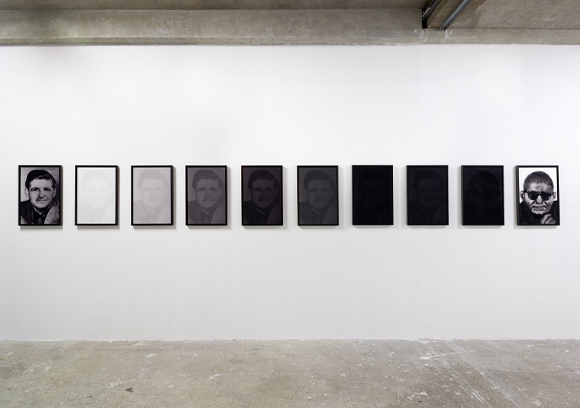
As a Black Man
Exhibition view from Walking on the light, CCC Tours, 2014, Tours.
Courtesy of the artist.
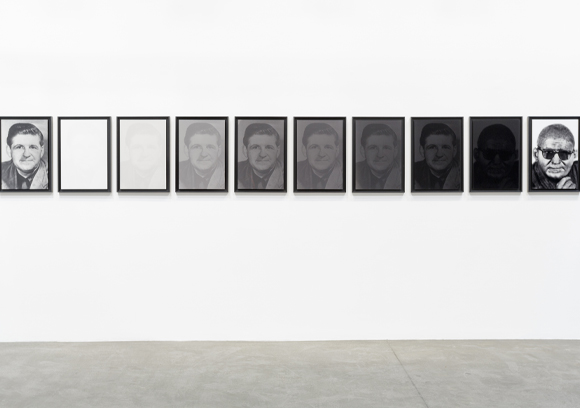
As a Black Man
Exhibition view from Inside the Fire Circle, Lawrie Shabibi, 2017, Dubai.
Courtesy of the artist.
|
|
|
|
|
| Collection of National Museum of Mali, Bamako
This work was part of 10ème Biennale Africaine de la Photographie - Telling Time, Bamako, 2015.
La série photographique As a Black Man prend pour sujet l’auteur américain John Howard Griffin (1920 – 1980) et son livre de 1961, Black Like Me. Dans son livre, Griffin décrit ses expériences d’homme blanc qui décide, en 1959, de se noircir la peau, de se raser la tête, et de voyager pendant six semaines dans les états ségrégationnistes du sud des Etats-Unis. Les dix photographies de la série de fatmi As a Black Man sont encadrées par un Griffin « blanc » à gauche et un Griffin « noir » à droite, les huit photographies intermédiaires devenant, selon le point de départ du spectateur, de plus en plus noires ou de plus en plus blanches. Premier plan et arrière-plan se confondant sur la surface plate et monochrome des photographies, ces images difficiles à lire soulèvent la question des endroits et des moments où la notion de race est, ou n’est pas, flexible. En utilisant ainsi la photographie, As a Black Man aborde frontalement le problème toujours brûlant de la longue utilisation de la représentation visuelle, et en particulier de la photographie, pour définir, propager et contester les constructions raciales, les représentations politiques, et le sentiment d’appartenance.
– Emma Chubb
Cet essai a été publié dans le catalogue Telling Time, 10èmes Rencontres de Bamako, Biennale Africaine de la Photographie.
|
|
The photographic series As a Black Man takes as its subject the American author John Howard Griffin (1920 – 1980) and his 1961 book, Black Like Me. In the book, Griffin details his experiences as a white man who decided to darken his skin, shave his head, and travel for six weeks in the segregated American South in 1959. The ten photographs in fatmi’s As a Black Man are bookended by “white” Griffin on the left and “black” Griffin on the right, while the eight photographs in between become increasingly white or black depending on one’s viewing position. As foreground and background collapse into the same flat and monochromatic surface of the photograph, these hard-to-read images raise questions about when and where race is—and is not—malleable. In doing so through photography, As a Black Man broaches the ever-pressing matter of how visual representation, and photography in particular, have long been used to delimit, circulate, and contest constructions of race, political representation, and belonging.
– Emma Chubb
This essay was first published in Telling Time, 10th Bamako Encounters, Biennale of African Photography catalogue.
|
|
|
|